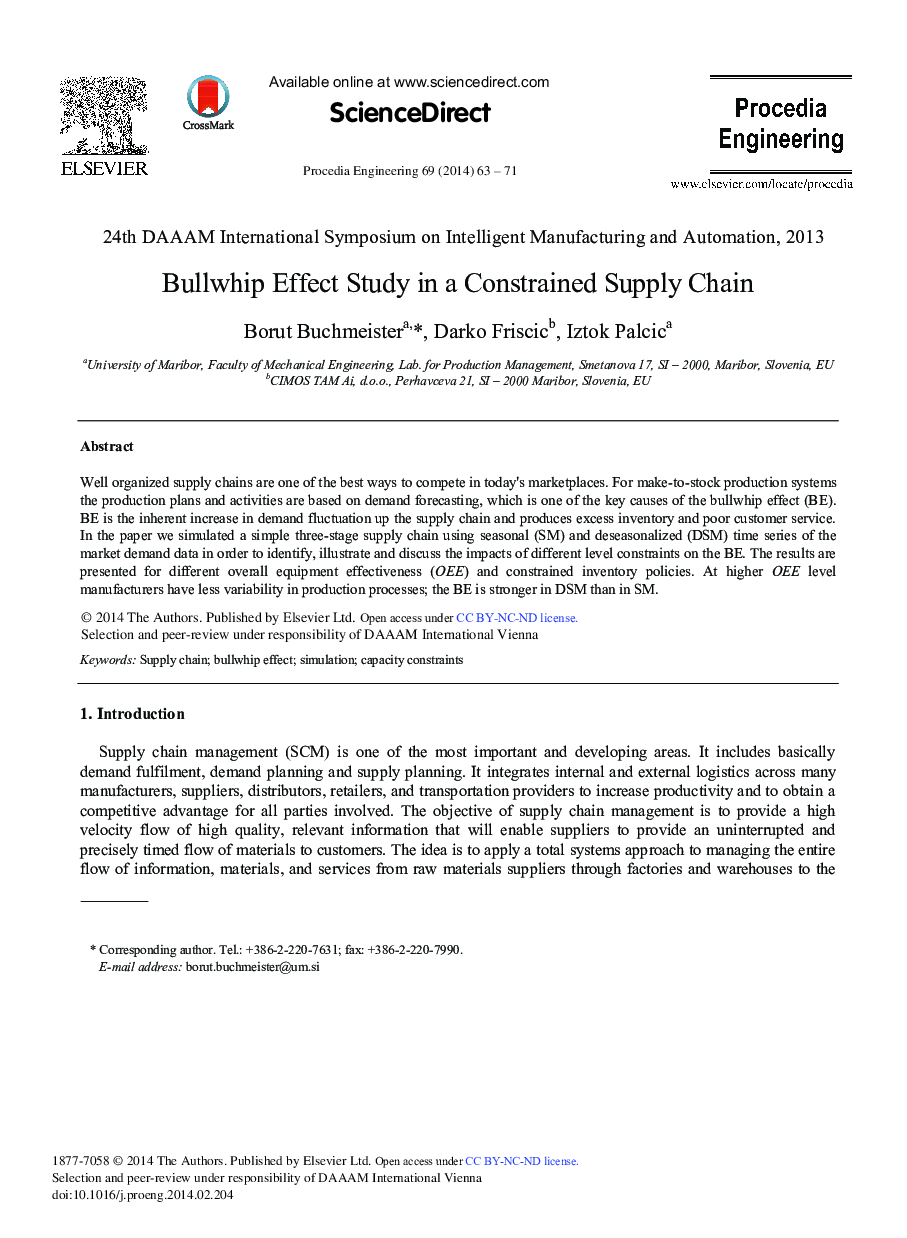| Article ID | Journal | Published Year | Pages | File Type |
|---|---|---|---|---|
| 859264 | Procedia Engineering | 2014 | 9 Pages |
Well organized supply chains are one of the best ways to compete in today's marketplaces. For make-to-stock production systems the production plans and activities are based on demand forecasting, which is one of the key causes of the bullwhip effect (BE). BE is the inherent increase in demand fluctuation up the supply chain and produces excess inventory and poor customer service. In the paper we simulated a simple three-stage supply chain using seasonal (SM) and deseasonalized (DSM) time series of the market demand data in order to identify, illustrate and discuss the impacts of different level constraints on the BE. The results are presented for different overall equipment effectiveness (OEE) and constrained inventory policies. At higher OEE level manufacturers have less variability in production processes; the BE is stronger in DSM than in SM.
